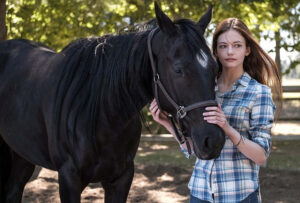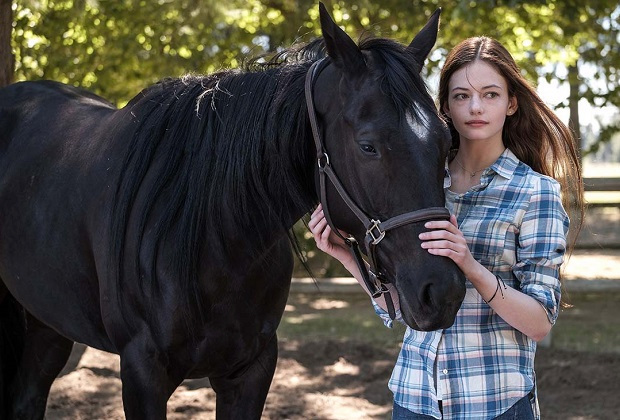Black Beauty
Posted on November 25, 2020 at 12:01 pm
B| Lowest Recommended Age: | Middle School |
| MPAA Rating: | NR |
| Profanity: | None |
| Alcohol/ Drugs: | None |
| Violence/ Scariness: | Animal abuse, sad deaths of humans and animals, fire |
| Diversity Issues: | Class issues |
| Date Released to Theaters: | November 27, 2020 |

Kate Winslet provides the narration, and we first meet the black horse with a white star on her forehead living wild in “an endless golden meadow,” taught by her mother that “a mustang’s spirit can never be broken.” She promises to tell us the secret to this inner strength by the end of the story. It will be tested, though, as she is caught by cowboys, who sell the horses they capture to riders if they can be tamed and to be killed if they cannot. The black horse is about to be relegated to that second category as untamable. But a kind-hearted trainer says that she is just frightened and angry. “Wouldn’t you be if a UFO came down and stole you from your family?”
He is John Manly (“Game of Thrones'” Iain Glen), something of a horse whisperer, and a scout and trainer for a rescue ranch in New York. He buys the horse, but even his patience and gentleness do not make much progress and the owner of the ranch says the horse will have to go. But then John learns that his sister and brother-in-law have been killed in a car accident and he is now guardian for their teenaged daughter Jo (Makenzie Foy of “Intersteller”). She, too, is frightened and angry. “Now I have two girls who want nothing to do with me,” he sighs.
Those two girls, Jo and the horse, are too sad to develop a relationship with anyone. But they immediately recognize the sadness in each other. Jo, who has had no experience with horses, is able to calm the horse she names Beauty. And Beauty calms her, too.
Jo tries to keep Beauty, but when that is impossible she promises to find her and get her back. Beauty is sold to one owner after another, some kind, some cruel.
The theme of the film is empathy, and as Beauty tells her story is is clear she knows the difference between those who do not intend to inflict damage and those who do not care. Her travels take her from a wealthy family with a snobbish mother whose daughter is incapable of understanding the Robert Smith quote John shares with Jo: “There is no secret so close as that between a rider and his horse,” to a mountain rescuer and a New York horse-drawn carriage driver. And the end will make you cry.
The biggest problem is that the screenplay tells us what it has already shown us and then tells us again. We get the message from the performances and from David Procter’s beautiful cinematography, which surrounds the story in golden light and makes us feel the danger of treacherous mountain rapids. The love story between Jo and Beauty is told with sincerity and affection. There is not much new here, but the message of courage, kindness, and loyalty is always worthwhile.
Parents should know that while the bad behavior and cruel treatment is mostly off-camera, described rather than shown, both humans and horses are injured and there are sad deaths.
Family discussion: Why did Jo and Beauty understand each other so well? Why does Jo want to use the word “partner” instead of “break?”
If you like this, try: “The Black Stallion,” “National Velvet,” and “Emma’s Chance” as well as “A Dog’s Journey” and “A Dog’s Way Home”

